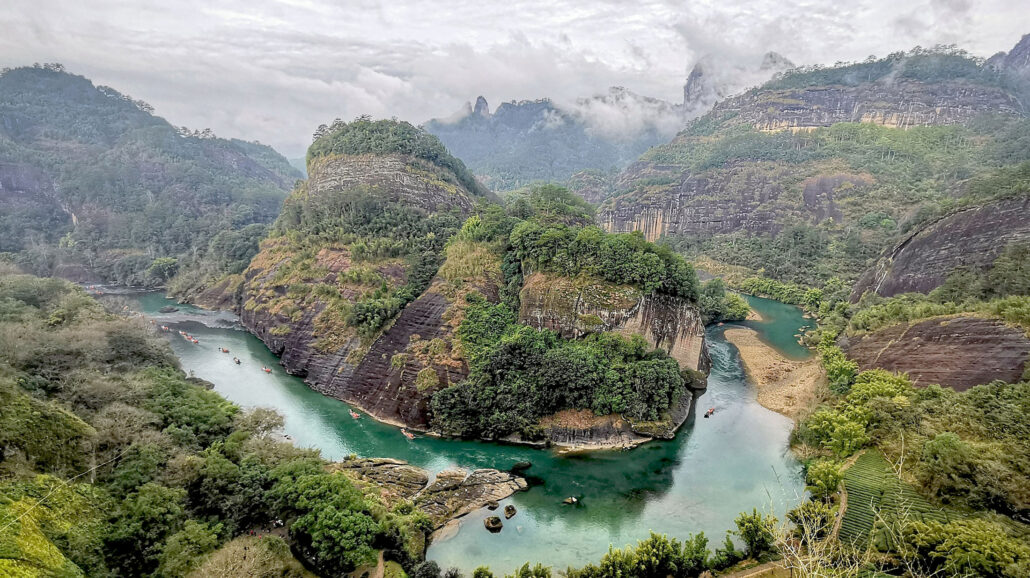
China is pushing forward with a vision to establish the largest national park network in the world over the coming decade. But Beijing’s huge land and water conservation strategy is beginning to draw greater scrutiny and concern.
In particular, observers worry that China’s national park development plans will involve forced relocations of rural communities. Huge tracts have already been declared off-limits to residents who have been relying on the resources found in them for centuries.
Others say China’s national park development aspirations are serving as a means for the government to further tighten its grip on western provinces, especially those that are home to sizeable populations of minority and indigenous groups such as Tibet and Xinjiang.
Launched with great fanfare
Two years ago, Beijing made global headlines when it announced the first phase of its national park push at the Conference of Parties to the United Nations Convention on Biological Diversity.
At that gathering, President Xi Jinping presented five of China’s first official national parks: Giant Panda National Park, Northeast China Tiger and Leopard National Park, Hainan Tropical Forests National Park, Three-River-Source National Park, and Wuyishan National Park.
“The five national parks cover a total area of about 230,000 square kilometers and protect nearly 30 percent of the key terrestrial wildlife species found in China,” Weijie Zhao, a Chinese conservation official, explained in an overview.
Last week the 15th CBD session—which became the longest in the Convention’s history due to delays caused by the COVID-19 pandemic—wrapped up in Nairobi, Kenya, with Chinese diplomat Zhou Guomei serving as the session’s president. Zhou reiterated her government’s commitment to fulfilling the Kunming-Montreal Global Biodiversity Framework adopted by CBD members. The Framework calls for at least 30 percent of the world’s surface to be conserved for wildlife protection by 2030.
Beijing says it’s only just beginning.
One year ago, China said that it had identified 49 other areas covering more than 1.1 million square kilometers. These lands and waters are now slated for eventual development into protected national parks.
44 of the sites chosen to be developed into national parks are found on land, three of them will be marine protected areas, and two sites will be mixed land and sea national parks.
“These sites were selected based on their ecological importance, unique natural landscapes, and rich biodiversity, said the plan jointly issued by the National Forestry and Grassland Administration, the Ministry of Finance, the Ministry of Natural Resources, and the Ministry of Ecology and Environment,” according to Xinhua, the government’s official news agency.
China says it aims to complete the establishment of its massive national park system by 2035.
No easy task
The new national park network will largely replace a network of protected national forests and wetlands. However, establishing a new national park network in a country as large and as old as China is anything but straightforward.
“In the case of the Giant Panda National Park, which covers three different provinces, there were as many as several dozen administrative units to be integrated,” recalled Zhiyun Ouyang, a member of the Chinese Academy of Sciences, in an interview with the National Science Review. “It involved the issues of job transfer or unemployment of many staff members, and was very difficult.”
Others warn that it may also involve forcibly relocating entire populations.
China says the largest forthcoming protected areas are found on the Qinghai-Tibet Plateau where 13 future national parks will be established, encompassing more than 70 percent of all future protected national park land areas. 11 other national parks will be established in the Yellow River Basin.
These areas are not completely wild, noted Matt Slade, a former researcher at the Center for Strategic and International Studies.
“While the announcement is an exciting development for conservationists, the new park system opens the door for Beijing to assert further control over ethnic minorities in remote regions of the country, undermining much of the image benefit China is seeking,” Slade warned in an assessment.
To give but one example, Slade pointed to China’s plans to establish Sanjiangyuan National Park in the Qinghai-Tibet Plateau. The area is richly biodiverse but also home to as many as 100,000 people.
Many of China’s nationally protected areas are currently managed locally, and Beijing is promising to maintain these local ties and protect the cultures that currently call these areas home. Slade says there is reason to be skeptical of Beijing’s assurances.
“As the status of Sanjiangyuan has steadily ascended to national park status, herders have been removed from ancestral lands and barred from entering certain zones of the park, ostensibly to prevent erosion and environmental damage,” he said. Slade worries that China will use its national park push as cover for the government’s open intentions to annihilate the idea of Tibet as culturally distinct from the rest of China.
Good for biodiversity, bad for people?
Recently published research suggests that these fears are well-founded.
Writing in the journal Sustainability, a Chinese research team says it took a closer look at the impact of work to establish Qilianshan National Park in China’s west. The researchers reminded readers that setting up national parks in China is quite different from what one finds in other jurisdictions such as the United States.
“Unlike the US’s national parks, tens of thousands of residents have lived in all the pilot national parks for generations in China,” writes Peng et al. “According to surveys by the local governments, around 54,665 people are now living within [Qilianshan National Park].”
In establishing these parks, the research team says it has unearthed evidence of large impacts on the local communities already living in these zones. There are some benefits to be had by the locals—for instance, new economic opportunities arriving from increased tourism—but they say their findings suggest that negative impacts generally outweigh positive ones.
“According to the QNP master plan, human activities are prohibited in the core protected area to protect the fragile alpine ecosystem better,” they wrote. “It is explicitly stated that grazing will not be allowed in the core protected area anymore, and the indigenous people living there will be resettled out of the park sometime in the future.”
No relocations had occurred at the time of their investigation into QNP’s establishment, but the team said no-grazing zones were already being enforced, leading to a major reduction in the amount of available pasture land for herders.
“Overall, the negative livelihood impacts exceed the positive ones at present,” the authors conclude. They recommend that China adjust its conservation policies to allow communities greater access to natural resources in national parks, resources that they’ve come to depend on for generations.
Cautiously optimistic
Others are excited about Beijing’s national park ambitions.
Another study finds that that the massive national park network China is now setting up will help the country peak and then reduce its total emissions of greenhouse gases. The huge conservation initiative will likely improve Beijing’s image as a global environmental leader, helped somewhat by China’s co-hosting of the lengthy CBD gathering and China’s role as the conference’s president.
China’s plans to set up the world’s largest national park network by 2035 “will leverage community conservation techniques to increase feasibility and disperse the park benefits across society,” argues Liu Shenmin of the International Land Conservation Network. “Community residents and the public can directly participate in the protection, construction, and management of national parks through concessions, voluntary services, ecological management, and protection positions.”
Beijing promises that, over time, the benefits to those affected by its national park development plans will far outweigh the positives as protected lands and waters attract greater numbers of domestic and international tourists and outdoor adventure seekers. Liu adds that the government’s plans for leasing some lands through conservation easements will also deliver new and greater sources of revenues for some communities.
The secretariat of the Convention on Biological Diversity is also taking a largely positive view of China’s ambitious national park development plans and Beijing’s efforts at protecting biodiversity and endangered species. “The investment by the Chinese governments in the environment, including ecology improvement and biodiversity conservation, has reached over 1 percent of its GDP,” CBD notes.
©2025 Public Parks



